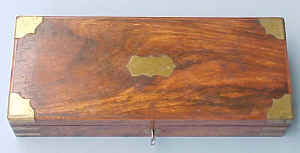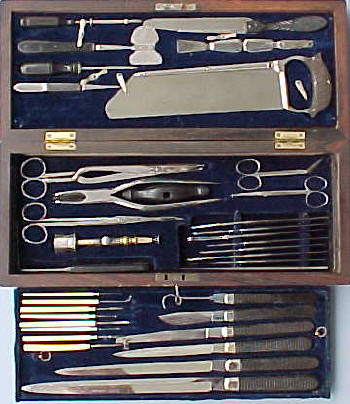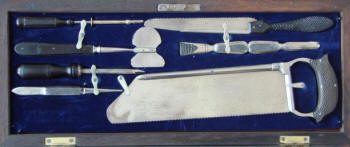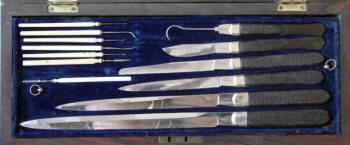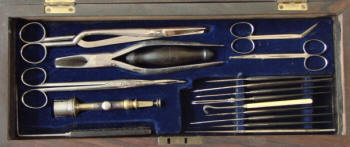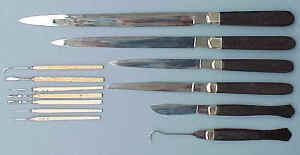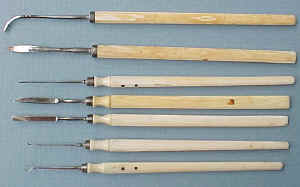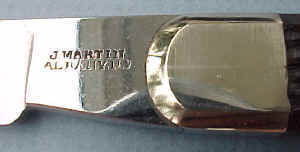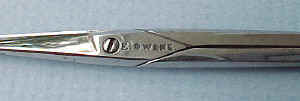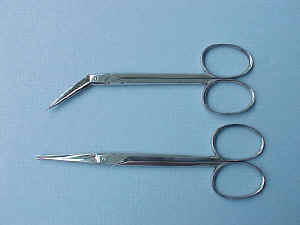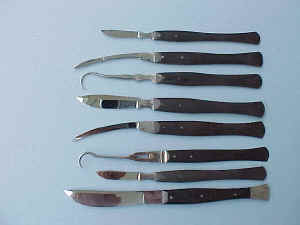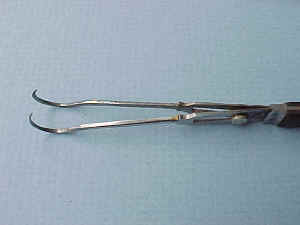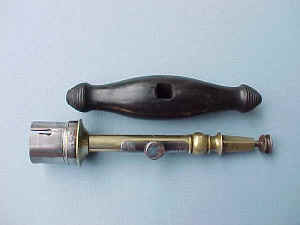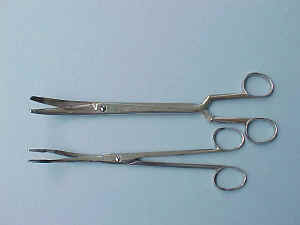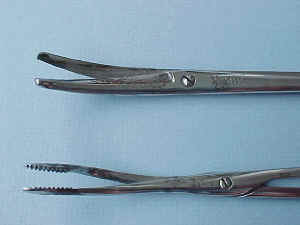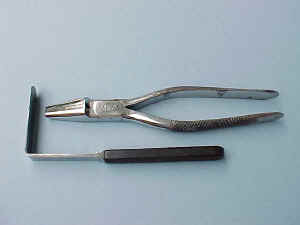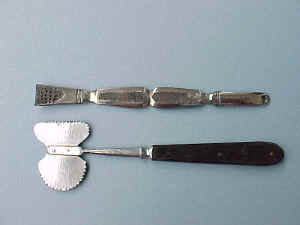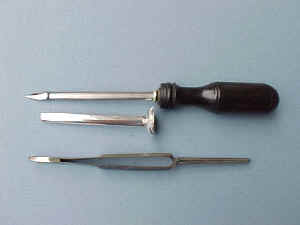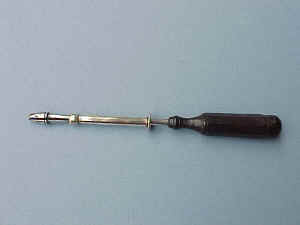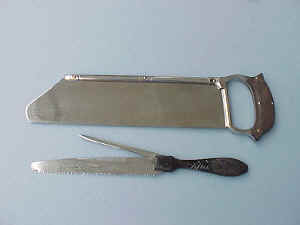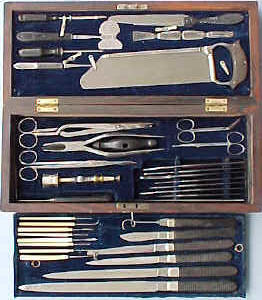James Martin was a minor
maker
of surgical instruments from 1843 until 1876 in Albany, New York. Martin
used instruments from Edward Owens who was also a maker of surgical
instruments in Albany from 1833 to 1851. See a smaller set by this
maker on page 291, fig. 247-248, of Edmonson's book.
|
James Martin cutler
1843-44: 42
South Lansing
1845-48: 38
South Lansing
1849: 173
Hudson
1850-51:
137 High surgical instrument maker
1852-69: 20
Beaver surgical instrument maker & cutler
1870: 20 Beaver
surgical instrument maker and cutlery and hardware
|
Edward Owens surgical and dental instrument maker
1833-37: 26
Beaver
1838-45: 28
Beaver
1846-48: 5
Green
1849-51: 28
Beaver cutler and surgical instrument maker
|
Maker
References:
Edmonson
What makes this set unique
is the1850's vintage, the varied contents, the fact that Martin was an isolated maker, and not
one of the major makers like Tiemann or Gemrig in New York or Philadelphia.
This three layer set is
unique in a number of ways. Most of the instruments are marked Martin,
but the scissors and one forceps (which obviously fit perfectly) is marked Owens. Apparently Owens
supplied instruments to Martin. Since Owens was in business until 1851,
that information is interesting because it helps date this particular
set.
If Owens was not in business after 1851, then it is likely this set
is from the late 1840's or early 1850's. The style of the very small amputation saw is
typical of the 1850's. The blade style of the amputation blades is like those from the
1850's. The handles of the amputation knives are
'beefy' and much heavier than those of later knives which also points to the early
1850's.
The absence of a
tourniquet is unusual for a major surgical set; this set has no place for
any type of tourniquet. It has a combination of amputation,
neurological, eye surgery, and general surgical instruments.
The ivory eye surgery
instruments are located in the removable tray and fit into shallow slots for
each instrument. There is a small compartment under the capital saw for
needles and suture material.
